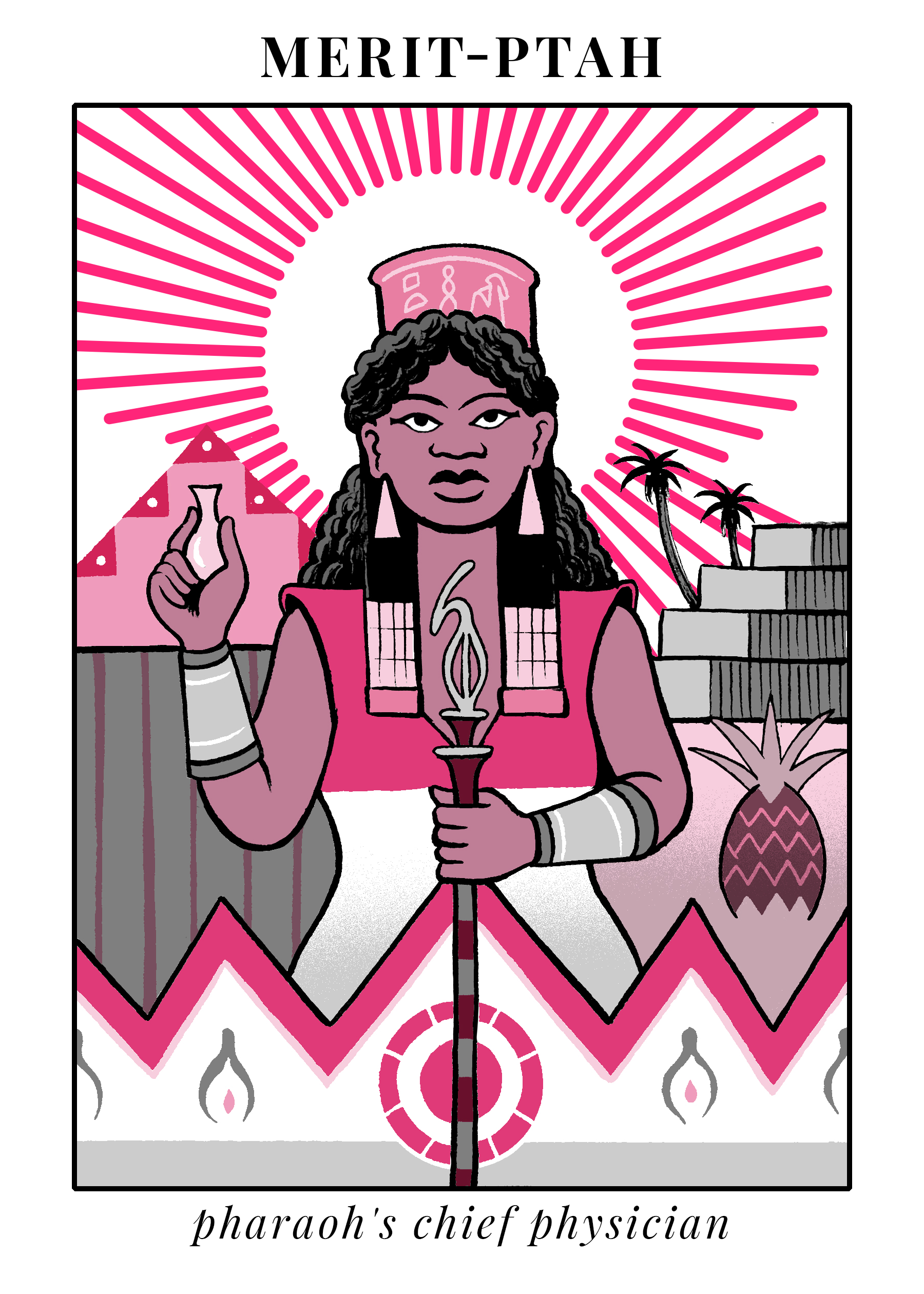
Matteo Farinella
Meet Merit-Ptah, the ancient Egyptian doctor who didn't exist
Though created by accident, her story fit neatly with burgeoning 20th century feminism
Legend has it that the first woman doctor in recorded history lived in ancient Egypt nearly 5000 years ago, around 2700 BCE. But sometimes legends are merely legends for a reason: the doctor in question, Merit-Ptah, probably did not exist. She's still our science hero.
Ancient Egypt held women in high esteem. Many of the Egyptian deities were goddesses, including Hathor (goddess of love and fertility), Ma'at (goddess of truth and order), and Nut (goddess of the sky). The goddess Sekhmet, depicted with a human body but the head of a lion, was the patron of doctors and healers. Women had equal rights to men. They could own land and businesses, wear whatever they wanted, divorce their husbands, and hold powerful social positions. Merit-Ptah, rumored to be the first recorded woman physician in history, was thought to be the chief doctor of the royal court around 2700 BC. Her picture was even on one of the pyramids in the Valley of the Kings.
Or, was it?
Late in 2019, microbiologist and medical historian Jakub Kwiecinski published an article in the Journal of the History of Medicine and Allied Sciences debunking the myth of Merit-Ptah. "Almost like a detective, I had to trace back her story, following every lead, to discover how it all began and who invented Merit-Ptah," he said in a press release.

Matteo Farinella
Merit-Ptah as we conceive of her today seems to have been born from a real healer named Pesehet, whose tomb is dated to the 25th - 22nd centuries BCE. Kwiecinski believes that another medical historian, Kate Campbell Hurd-Mead, accidentally conflated Pesehet and an unnamed woman mentioned on her son's tomb as a chief physician. The son was a high priest during Egypt's fifth dynasty around 2700 BC.
From there, the legend of Merit-Ptah blossomed. Hurd-Mead's historical work was published in the early 1930s. World War II caused huge changes in women's roles in society, and Kwiecinski notes that Merit-Ptah again appeared in an article on women in medicine in 1940. Then in the 1960s and early 1970s, women successfully pushed back against discrimination in medical school admissions. The story of Merit-Ptah was revived and repeated in several books and articles over the next few decades and her status as a feminist academic icon was cemented.

Kate Campbell Hurd-Mead, who accidentally invented Merit-Ptah
"It was associated with an extremely emotional, partisan – but also deeply personal – issue of equal rights," noted Kweicinski in the press release. "Altogether this created a perfect storm that propelled the story of Merit-Ptah into being told over and over again."
Merit-Ptah's life was a myth. But her popularity reflects the very real hunger of women to be seen as equals in science and medicine. And although Merit-Ptah's story started, and initially proliferated, in white and Eurocentric circles, Kwiecinski notes that she also featured in Afrocentric black history, where she shined as "an example of the scientific genius of the black Africans."
In a way, it doesn't matter that the exact person we consider to be Merit-Ptah never existed. She still stands as a figurehead and an inspiration for women – doctors, nurses, healers, scientists – around the world. As Kwiecinski says: "She is a very real symbol of the 20th century feministic struggle to write women back into the history books, and to open medicine and STEM to women."
